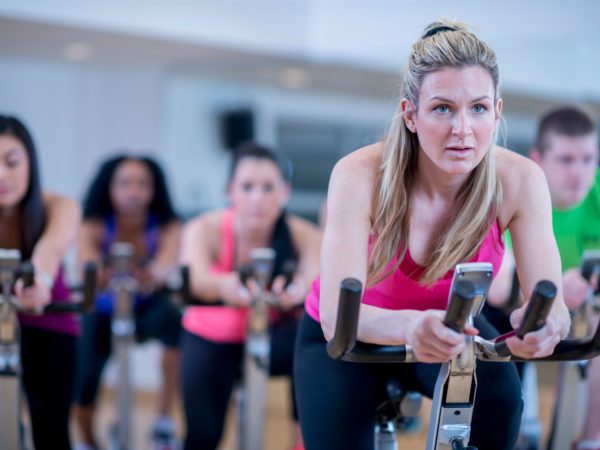Overdoing Exercise?
A friend ended up in the hospital after her first spinning class. Her muscles were injured and her kidneys were affected. Is spinning dangerous?
Andrew Weil, M.D. | October 17, 2017

Like other forms of exercise, spinning isn’t dangerous as long as you ease into it. Beginners especially need to be careful not to push too much to keep up with an instructor’s urging to work harder and harder. One possible, though rare, consequence of going all out when beginning a new type of exercise is a dangerous disorder called rhabdomyolysis, which may have been what your friend experienced. This condition results from the death of muscle fibers and release of their contents into the bloodstream. These compounds can harm the kidneys and can lead to kidney failure without prompt treatment.
Over the past few years doctors have reported an upswing in cases of rhabdomyolysis related to spinning. The condition can also occur during military training, marathon running, and other forms of strenuous exercise.
Symptoms of rhabdomyolysis include mild muscle soreness and swelling, fatigue, nausea and vomiting. Urine may turn red or as dark as a cola beverage. Diagnosis is confirmed by detecting elevated blood levels of the enzyme creatine phosphokinase (CPK).
In April 2017, a team of physicians from Westchester Medical Center in Valhalla, NY reported three cases of rhabdomyolysis, all of which occurred among relatively young adults who were newcomers to spinning. In one case, a 33-year-old woman had to stop exercising after only 15 minutes because she felt lightheaded and vomited. Four days later she sought medical treatment for thigh pain, tenderness, swelling and weakness. She was diagnosed with rhabdomyolysis and required a two-week hospital stay. In the second case another 33-year-old woman complained of similar symptoms; her kidney damage required hemodialysis. The third case was that of a 20-year-old man who had severe thigh pain and couldn’t lift his legs three days after spinning. The researchers cited an earlier report of 46 cases of rhabdomyolysis related to spinning classes: 42 of the affected individuals were first-time spinners.
Rhabdomyolysis seems more likely to occur in people who are new to this form of exercise. It is vital for beginners to know how to gradually increase the time and pace on an indoor cycle as well as to recognize the importance of staying well hydrated. Spinners should also avoid nonsteroidal anti-inflammatory drugs (NSAIDs), because the combination of dehydration, bacterial or viral infections, NSAIDs, and rhabdomyolysis amounts to what researchers have called “a perfect storm for the kidneys.”
If you’re considering taking up spinning, be aware of the risks of rhabdomyolysis, its signs and symptoms and the importance of seeking prompt medical treatment if any develop.
There’s nothing wrong with spinning itself or high intensity workouts in general. Just take it easy at first and don’t push yourself beyond your limits.
Andrew Weil, M.D.
Source:
Maureen Brogen et al, “Freebie rhabdomyolysis: a public health concern. spin class-induced rhabdomyolysis.” American Journal of Medicine, April 2017, DOI: dx.doi.org/10.1016/j.amjmed.2016.11.004












